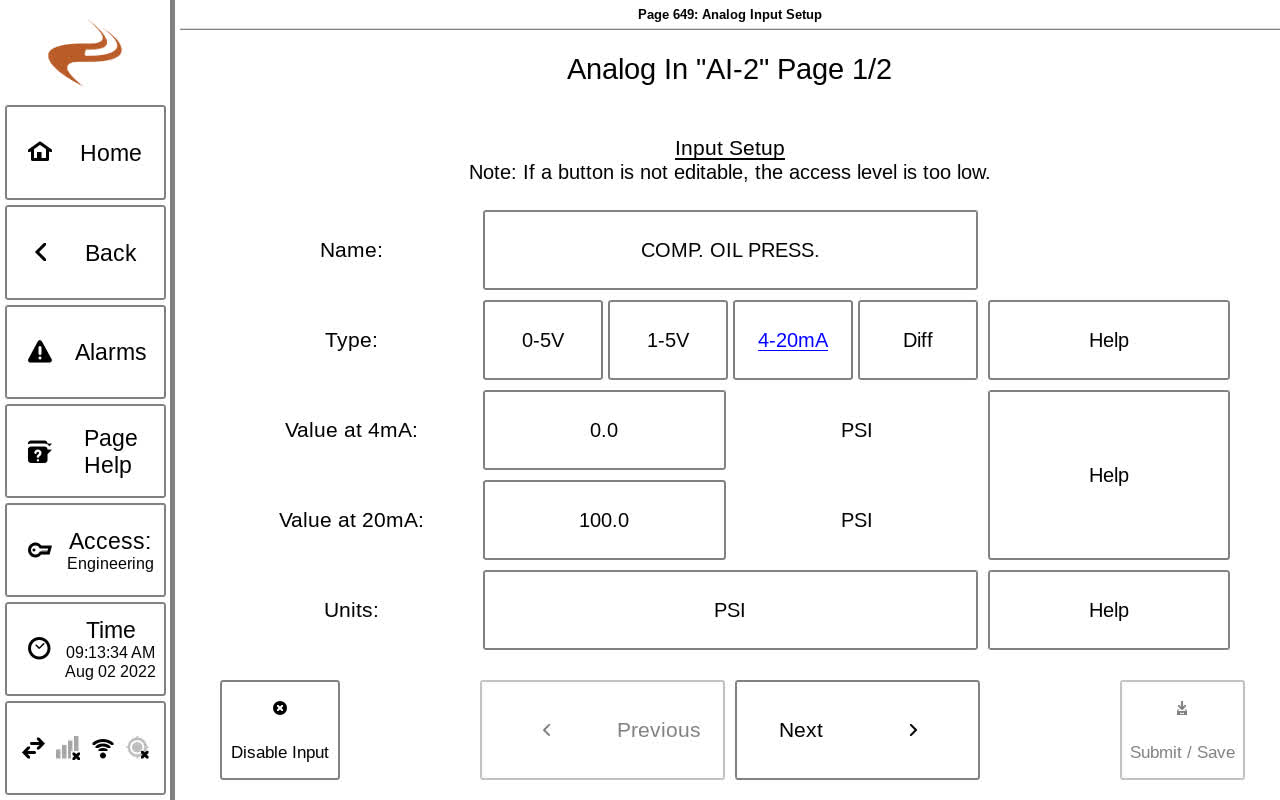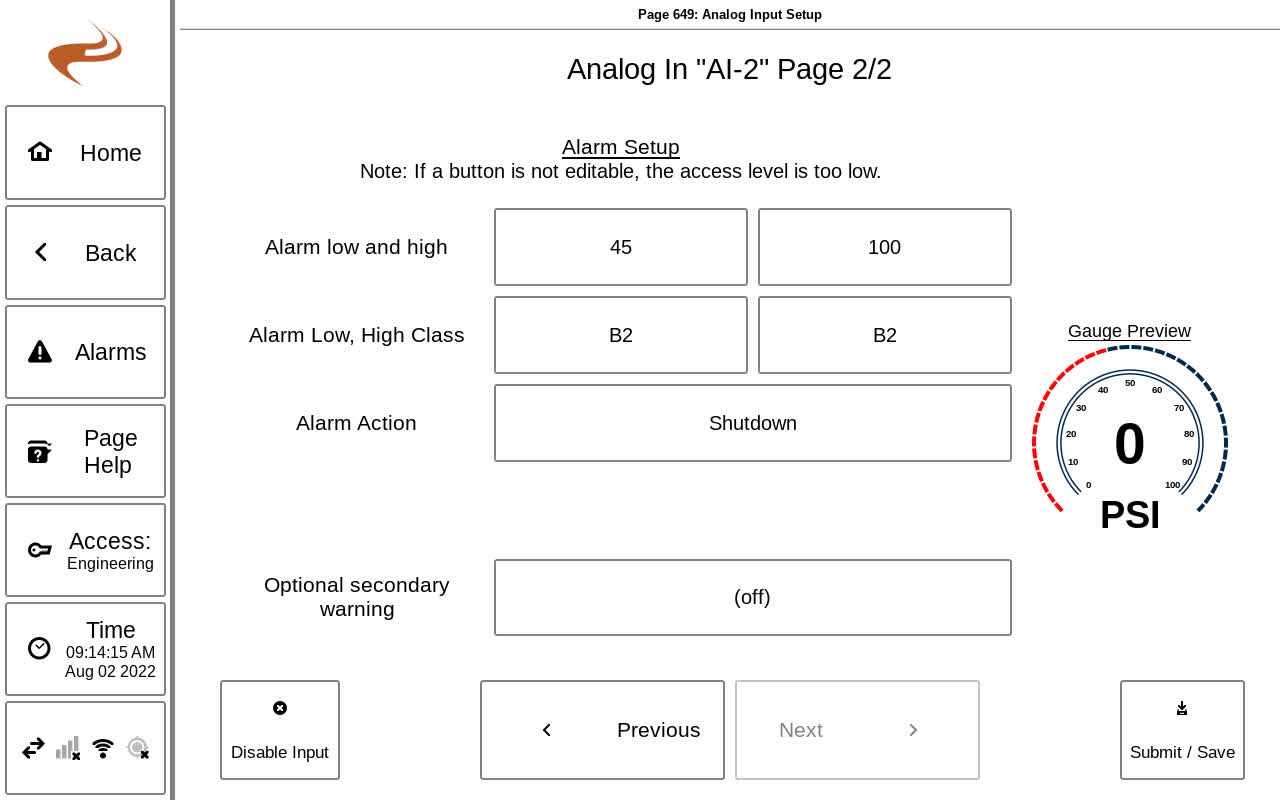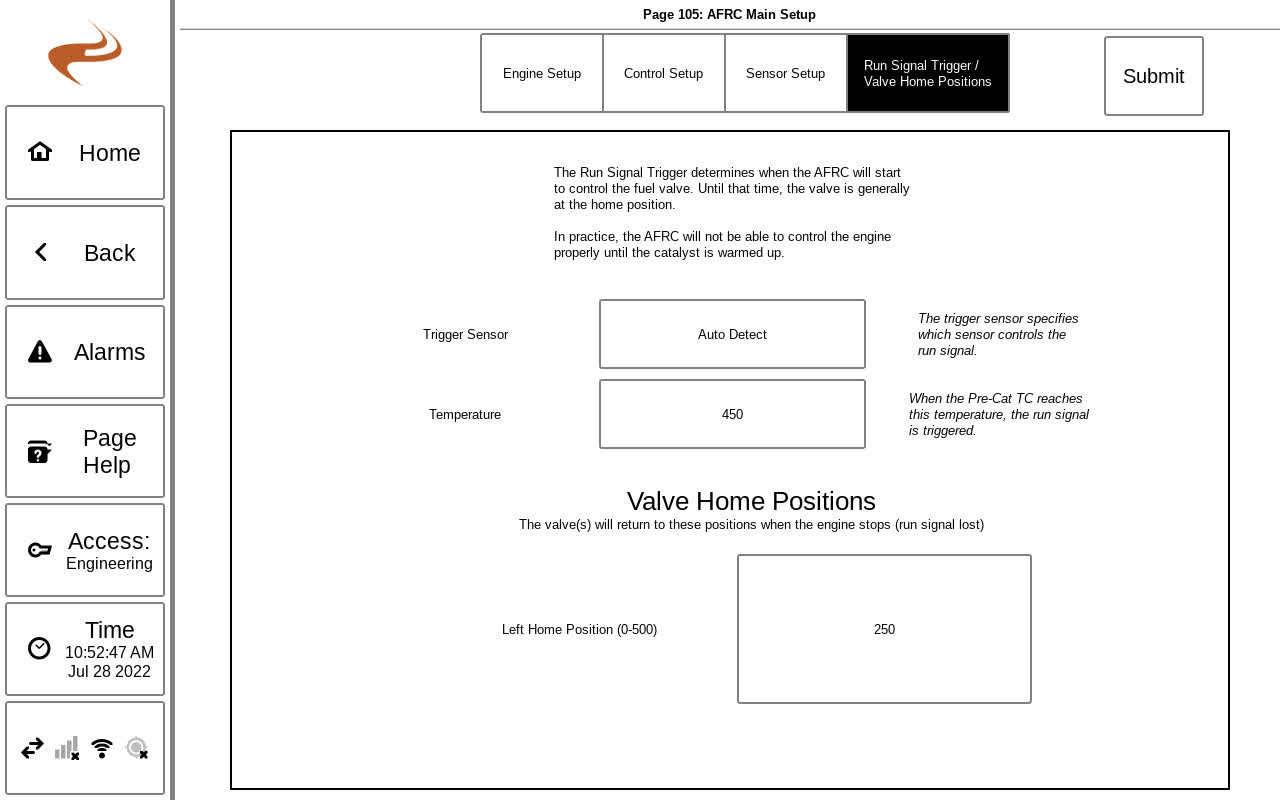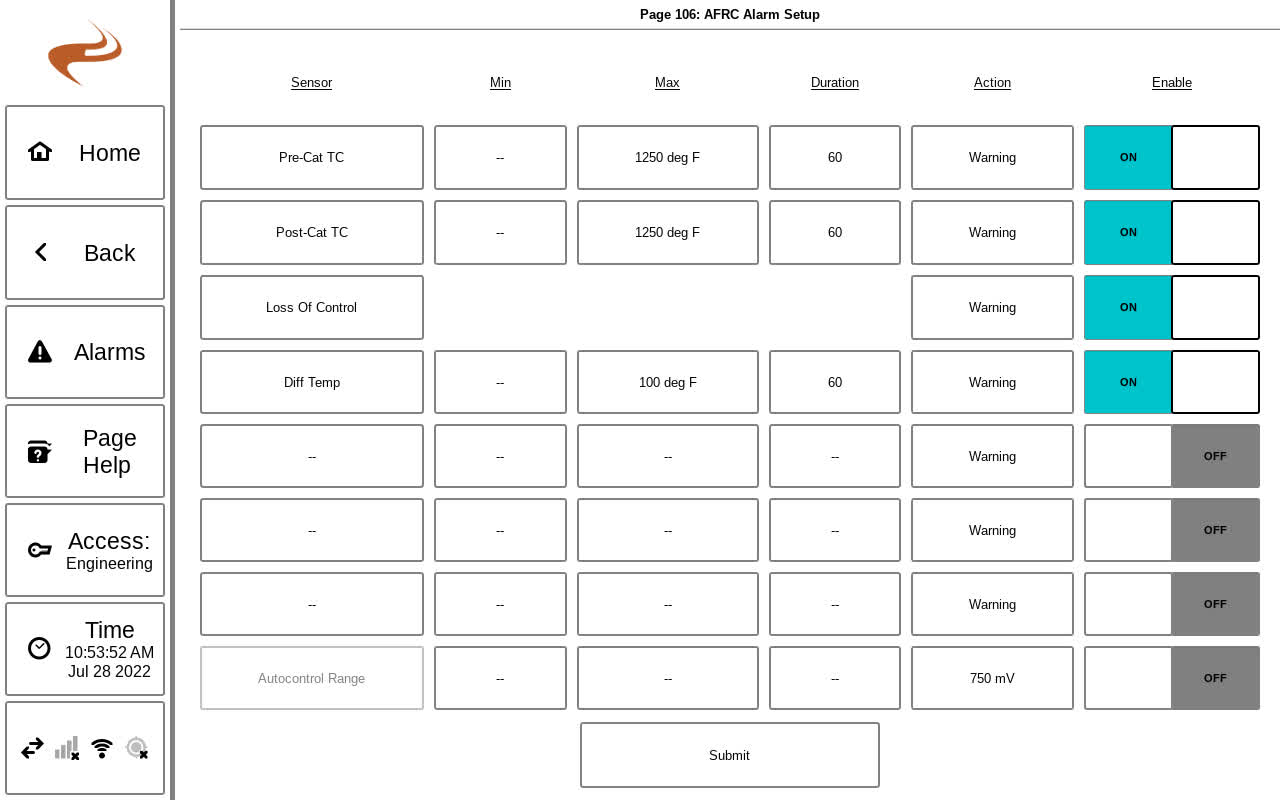AFRC Setup
Video available for this topic: https://www.youtube.com/watch?v=PAmjcq7CPt0
ENGINE CONDITION
For proper AFRC operation, it is critical that the engine be in good operational status. Verify the following before running the AFRC:
- Valves are adjusted to factory specification
- Spark plugs are properly gapped and in good condition
- Cylinders have good compression
- Mixers are in good condition and regulator fuel pressure is set to factory specification
- Fuel connections are secure and leak-free
- Ignition system functioning correctly and timing set appropriately for fuel composition
CONTROLLER SETUP
While the engine is not running, perform the following steps to prepare the controller for operation:
- "AFRC module is installed and wired
- Digital power valve(s) are installed
- Secure the front panel of the EIM to the enclosure by re-tightening the four (4) front panel screws
- Run signal source is properly connected
- Run signal source is properly selected on the Run Signal Trigger screen (Pg. 10)
- Fuel connections are secure and leak-free
- Load valve manual adjustments on external dynamic valves are fully open (full rich, or seven turns from fully closed) for startup only
- Enter Setup or Engineering mode on the controller by entering the appropriate password
- Set the “Control” toggle button on the AFRC Home screen (Lite Pg. 300, Adv. Pg. 200) to “Manual”
The engine can now be started.
VALVE SETUP
No valve setup required unless an External Dynamic or 600 Series valve is being used. For information on these valve types, their setup, and operation refer to “APPENDIX D. EXTERNAL DYNAMIC AND 600 SERIES VALVES”.
SENSOR SETUP
The AFRC Advanced has the following optional sensor inputs available for process monitoring, run signal, and mapping:
- Manifold Pressure Sensors (two available)
- "Manifold Press Left" and "Manifold Press Right"
- Single bank configurations utilize the "Manifold Pressure Left" input
- Sensors are pre-configured for the system and can only be enabled or disabled
- Analog (one available)
- "ANALOG"
- Configurable to 0-5V, 1-5V, or 4-20mA
- Oil Pressure Switch (one available)
- "Oil Press Switch"
- Pre-configured as normally open (N/O) and can only be enabled or disabled
- Thermistor (one available)
- "Ambient"
- Thermocouple (one available)
- "Manifold"
- Type-K thermocouple only
- Magnetic Pickup (one available)
- "RPM"
- 1-100 Volts
The AFRC Lite has the following optional sensor available for process monitoring and mapping
- Manifold Pressure Sensor (one available)
- "Manifold Press"
- Sensor is pre-configured for the system and can only be enabled or disabled
The different sensor types are available for setup by selecting their respected buttons on the top of the screen.
Configuring the Analog and Discrete Inputs
To setup the manifold pressure sensors or the oil pressure switch, simply select the “Enable” toggle box next to the sensor label. Darker colored toggle buttons indicate the sensor is actively enabled.
For the general purpose “ANALOG” input, the following fields are required:
- Name – Label of the sensor that will be displayed within the AFRC’s user interface
- Enabled – Activates sensor input
- Output – 4-20mA, 0-5 Volt, or 1-5V sensor output type
- Low Scale – Lowest output value of the sensor
- Full Scale – Highest output value of the sensor
- Units – Units of the sensor
AI/DI Sensor Setup Screens
Configuring the Temperature Inputs
The thermocouple and thermistor inputs only require their respected “Enable” toggle buttons to be selected in order to be operational.
Configuring RPM
The RPM input is configured by providing the pulses per revolution and selecting the “Enable” toggle button. This option is only available on the AFRC Advanced.
RUN SIGNAL
By default, the run signal selection is set to “Auto-Detect”, which scans enabled sensors for each module. The AFRC Advanced has three applicable inputs:
- Pre-catalyst thermocouple (terminals 24 and 25)
- Oil pressure switch (terminals 39 and 40)
- RPM (terminals 17 and 18)
If an AFRC Lite is installed, the only available run signal trigger sensor available is the pre-catalyst thermocouple (terminals 21 and 22).
Additionally, the run signal can be generated from a connected EMD, if equipped, using the following inputs:
- Pre-catalyst thermocouple
- Oil pressure switch
Finally, the Ignition state can be used to determine run signal, if the ignition is in a running state the signal is set to Run.
Run Signal Trigger Screen
ALARM SETUP
Up to eight (8) custom alarms can be configured on the AFRC to display within the Alarms screen (Pg. 40) or to trigger an external alarm though the error relay (terminal 6).
Configuring alarms is done on the Alarm Setup screen (Lite Pg. 305, Adv. Pg. 206) through the following parameters:
- Sensor – Input or condition to be monitored
- Only enabled sensors are available for selection
- Min – Minimum trigger value (optional)
- Max – Maximum trigger value (optional)
- Duration – Time, in seconds, for the sensor reading to either be below the minimum trigger value or above the maximum trigger value to become active
- Action – Action to take when alarm becomes active
- Warning – Displays the alarm within the Alarms screen (Pg. 40) and flashes the “Alarms” button on the footer of the display
- Shutdown – Closes the error relay (terminal 6), displays the alarm within the Alarms screen (Pg. 40), and flashes the “Alarms” button on the footer of the display
It is optional to select both “Min” and “Max” values, but at least one must be selected for sensor monitoring alarms. Selecting both values is available for monitoring a condition within a window, if desired.
Alarm Setup Screen
Upon selecting the necessary information, the alarm is enabled by toggling the “Enable” toggle box next to the sensor’s name.
Note: Modifying an existing alarm requires the “Enable” toggle box to be toggled off and back on to take effect.
Note: A sensor can be placed in two alarm rows. For example, a PostCat TC alarm could be configured to shutdown at 1250, and generate a warning at 1000.



